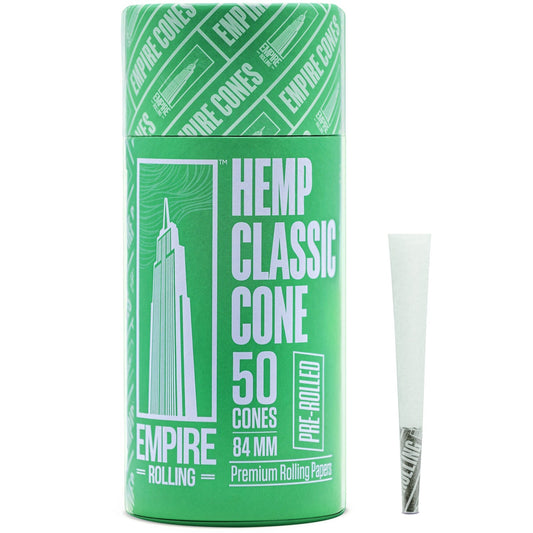Cannabis and Urban Farming: Growing Marijuana in Small Spaces
Urban farming has gained traction in recent years as a sustainable solution to food insecurity, environmental degradation, and the disconnect between consumers and their food sources. Amidst this urban agricultural revolution, cannabis cultivation has emerged as a viable option for urban farmers seeking to harness the benefits of small-scale, sustainable growing practices. In this blog post, we'll explore the intersection of cannabis and urban farming, discussing techniques, tips, and best practices for growing marijuana in small spaces, whether it's a balcony, rooftop, or indoor grow room.
The Rise of Urban Farming:
Addressing Food Security and Sustainability:
1. Urban farming offers a promising solution to the challenges of food insecurity and environmental degradation in densely populated cities. By growing food locally, urban farmers reduce transportation emissions, conserve water and land resources, and increase access to fresh, nutritious produce for urban residents. From rooftop gardens to community plots, urban farming initiatives empower individuals and communities to take control of their food systems and build more resilient, sustainable cities.
Fostering Community Engagement and Education:
2. Urban farming projects provide opportunities for community engagement, education, and empowerment, fostering connections between residents, local businesses, and policymakers. Through gardening workshops, farmers' markets, and educational programs, urban farmers share knowledge, skills, and resources with diverse audiences, promoting environmental stewardship, healthy eating habits, and social cohesion. By cultivating a sense of shared ownership and pride in local food production, urban farming strengthens the social fabric of neighborhoods and contributes to the well-being of urban communities.
Cannabis and Urban Farming: Growing Marijuana in Small Spaces:
Choosing the Right Strain:
1. When growing cannabis in small spaces, it's essential to select strains that are well-suited to the constraints of your environment. Look for compact, bushy varieties that are resilient to stress and adaptable to indoor or outdoor cultivation. Auto flowering strains, which flower based on age rather than light cycle, are particularly well-suited to small spaces and can yield multiple harvests in a single growing season.
Optimizing Light and Space:
2. Light is one of the most critical factors influencing cannabis growth and yield. In small-scale urban farming settings, maximizing natural light and supplementing with artificial lighting can help optimize plant growth and flowering. For outdoor cultivation, choose a sunny location with at least six hours of direct sunlight per day. For indoor grows, invest in high-quality LED or fluorescent grow lights that provide the full spectrum of light needed for healthy plant development.
Container Gardening and Vertical Farming:
3. In urban settings with limited space, container gardening and vertical farming techniques offer efficient ways to grow cannabis in small spaces. Choose lightweight, breathable containers with adequate drainage to prevent waterlogging and promote healthy root growth. Vertical growing systems, such as trellises, shelving units, or hanging baskets, allow you to maximize vertical space and cultivate multiple plants in a compact footprint. Additionally, consider companion planting with other herbs, vegetables, or flowers to maximize space and promote biodiversity in your urban garden.
Soil Health and Nutrient Management:
4. Healthy soil is the foundation of successful cannabis cultivation, providing essential nutrients, moisture retention, and microbial activity to support plant growth and vitality. When growing in containers or raised beds, use high-quality potting mix or compost amended with organic matter to provide a nutrient-rich growing medium for your cannabis plants. Supplement with organic fertilizers, such as compost tea or fish emulsion, to promote vigorous growth and flowering without the use of synthetic chemicals.
Watering and Pest Management:
5. Proper watering and pest management are crucial aspects of urban cannabis farming, particularly in small spaces where environmental conditions can fluctuate rapidly. Water your plants consistently, keeping the soil evenly moist but not waterlogged, to prevent root rot and nutrient deficiencies. Monitor your plants regularly for signs of pests or diseases, such as yellowing leaves, wilting, or pest damage, and take proactive measures to address any issues before they escalate. Consider using natural pest control methods, such as neem oil or insecticidal soap, to minimize the need for chemical pesticides and protect beneficial insects in your garden.
Harvesting and Curing:
6. Harvesting and curing cannabis properly are essential steps to preserve the potency, flavor, and aroma of your homegrown buds. When the trichomes (tiny resin glands) on your cannabis plants have turned cloudy or amber-colored, indicating peak cannabinoid and terpene levels, it's time to harvest. Trim your plants carefully, removing excess foliage and fan leaves, and hang them upside down in a cool, dark, well-ventilated space to dry slowly. Once your buds are dry to the touch, place them in airtight containers and store them in a cool, dark place to cure for several weeks, burping the containers regularly to release excess moisture and prevent mold growth.
In the bustling urban landscapes of today's cities, cannabis cultivation offers a unique opportunity for urban farmers to connect with nature, promote sustainability, and cultivate resilience in their communities. By embracing small-scale, sustainable growing practices and harnessing the power of innovation and creativity, urban farmers can cultivate abundant, high-quality cannabis crops in even the smallest of spaces. Whether it's a rooftop garden, balcony, or indoor grow room, cannabis and urban farming go hand in hand, paving the way for a greener, more sustainable future for all.



















